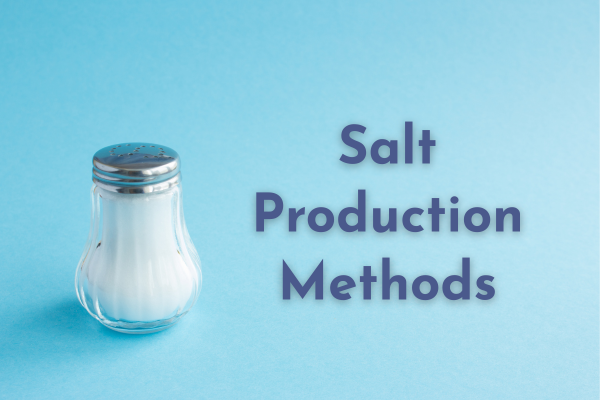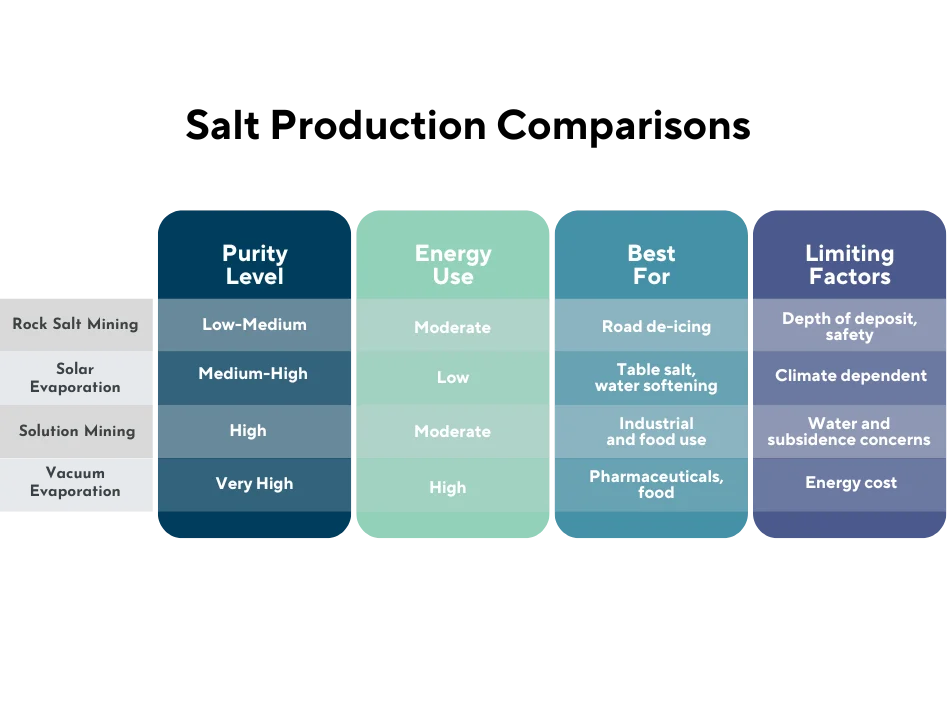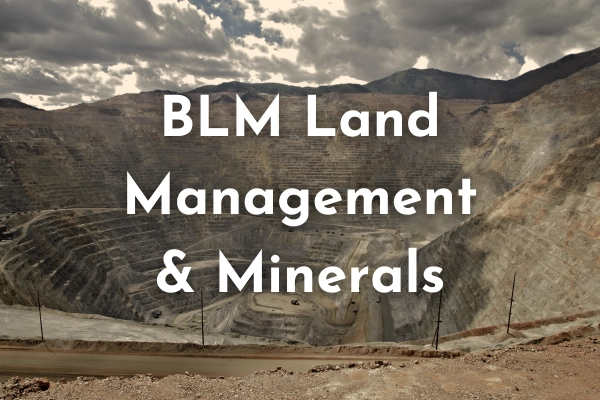July 25, 2025
July 25, 2025

Why Salt Matters and How We Extract It
Salt is one of the most essential minerals on Earth. Chemically known as sodium chloride (NaCl), salt is crucial for human health, food preservation, industrial processes, and road safety. From seasoning our meals to de-icing winter roads, salt touches nearly every aspect of our daily lives. But have you ever wondered how this seemingly simple substance makes its way from the earth to your table or sidewalk?
There are several methods for mining salt, each suited to different geological conditions and end-use applications. This article explores the primary salt mining techniques, why they’re used, and how they support a wide range of industries.
Why Is Salt So Important?
Salt plays a critical role in both human civilization and industrial progress. It's vital for:
According to the U.S. Geological Survey, in 2024 the United States produced 40 million metric tons of salt, primarily used for highway de-icing, chemical manufacturing, and food-grade applications. [USGS]
The Main Methods of Salt Mining
There are four main techniques for extracting salt:
Rock salt, or halite, is extracted from underground deposits formed by ancient seabeds that dried up millions of years ago. These deposits can be hundreds of feet thick and are often located deep underground.
Process:
Miners use traditional mining techniques to drill, blast, and haul rock salt to the surface. Once removed, the salt is crushed and screened into various sizes for different applications.
Where It’s Used:
This method primarily produces road salt used for winter de-icing. Because it is less refined, rock salt is ideal for melting snow and ice efficiently.
Locations:
Notable rock salt mines include the Western New York Hampton Mine, and the Detroit Salt Mine in Michigan, which spans over 1,500 acres beneath the city.
Environmental Note:
Modern underground salt mines operate under strict safety and environmental regulations, minimizing surface disruption and controlling groundwater contamination.
Solar evaporation is one of the oldest and most sustainable methods for producing salt. It’s best suited for warm, arid climates with high evaporation rates and low rainfall.
Process:
Sea water or brine from salt lakes is channeled into shallow ponds and allowed to evaporate under the sun. As water evaporates, salt crystals form and are collected, washed, and packaged.
Where It’s Used:
Solar salt is often used for table salt, water softening, and some industrial applications. It’s generally more pure than rock salt and requires less post-harvest processing.
Locations:
Major U.S. production locations include San Francisco Bay, Great Salt Lake in Utah, and Arizona.
Environmental Note:
Solar evaporation is energy-efficient and eco-friendly but limited by climate conditions.
Solution mining is a method that dissolves salt from underground deposits and extracts it in liquid form.
Process:
Freshwater is pumped into underground salt beds, where it dissolves the salt to create a concentrated brine. This brine is then brought to the surface and evaporated—either by heat (vacuum evaporation) or natural solar methods—to recover salt crystals.
Where It’s Used:
This technique is ideal for producing high-purity salt used in pharmaceuticals, food processing, and chemical manufacturing.
Locations:
Solution mining is common in New York, Kansas, Texas, and Ohio.
Environmental Note:
Solution mining has a smaller surface footprint and it operated using careful monitoring to prevent subsidence and protect water tables.
This is an industrial refinement process rather than a mining method in the traditional sense. It is used to produce ultra-pure salt.
Process:
Brine obtained through solution mining is placed into evaporators that use heat and vacuum pressure to crystallize salt. The vacuum reduces the boiling point, allowing evaporation at lower temperatures, which saves energy and produces consistent, high-quality salt.
Where It’s Used:
Vacuum salt is used in food processing, pharmaceuticals, dye and textile manufacturing, and chlor-alkali production.
Locations:
Vacuum salt plants are typically located near solution mining operations for easy brine transport, such as in Kansas, Louisiana, Michigan, New York, Ohio, and Texas
Environmental Note:
While energy-intensive, vacuum evaporation produces minimal waste and allows for strict control of salt purity.

Conclusion: A Mineral That Makes It Happen
Salt is far more than a kitchen staple; it’s a cornerstone of modern life. From keeping our roads safe in winter to enabling chemical reactions in factories, salt plays a vital role in infrastructure, industry, and public health. The diversity of salt mining techniques ensures that we can meet the world's needs sustainably, efficiently, and safely.
Whether extracted through underground blasting, solar ponds, or evaporators, salt proves time and again that it’s one of the most essential minerals on Earth. It’s another example of how Minerals Make It Happen!
Sources:

December 10, 2025

December 3, 2025

November 10, 2025